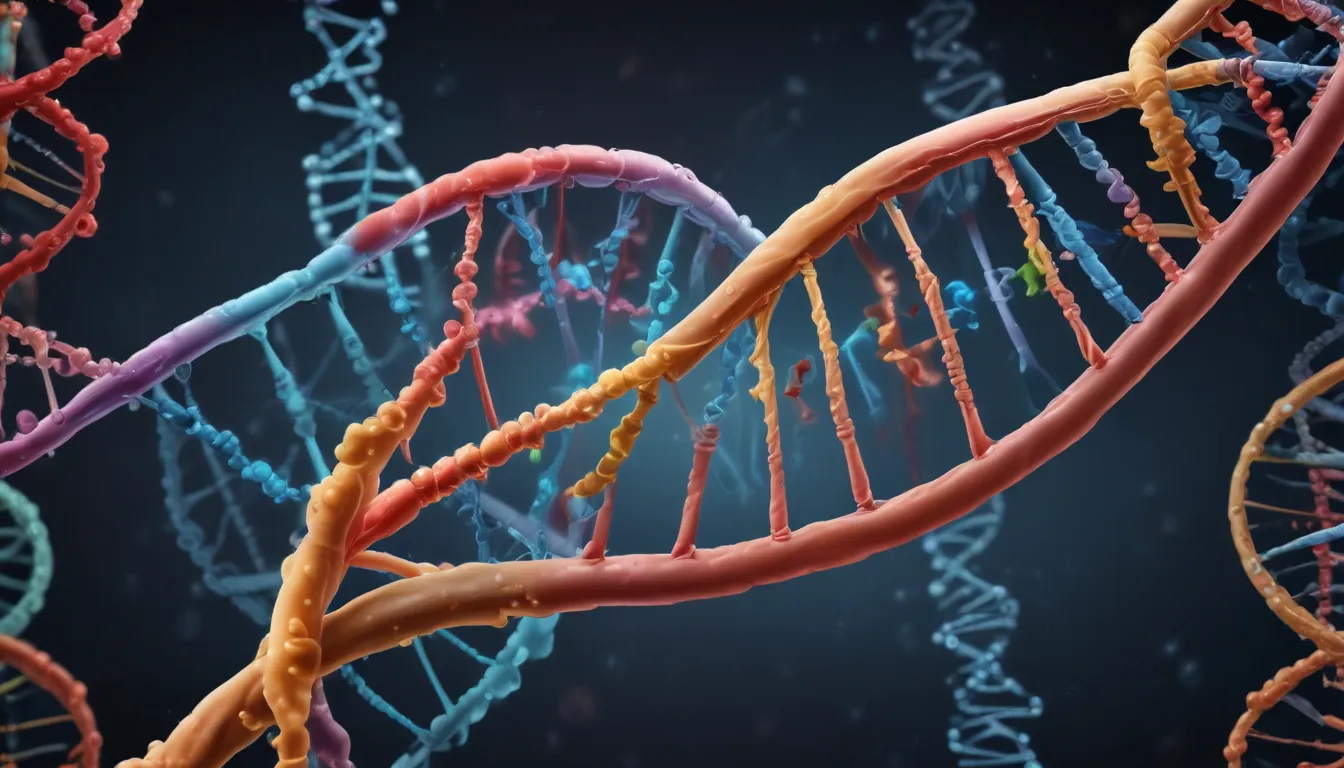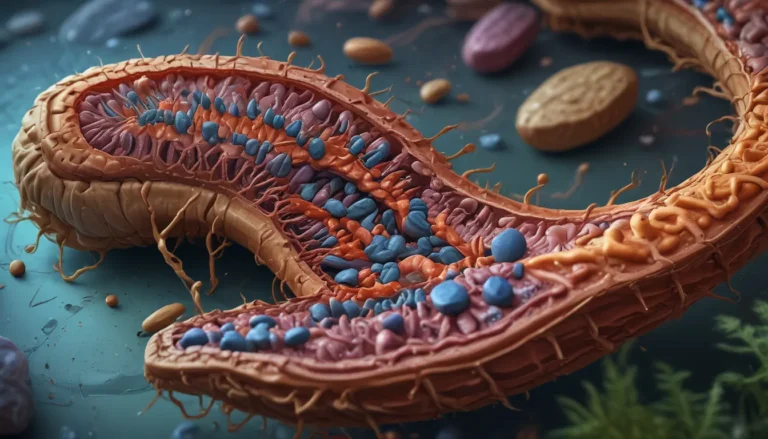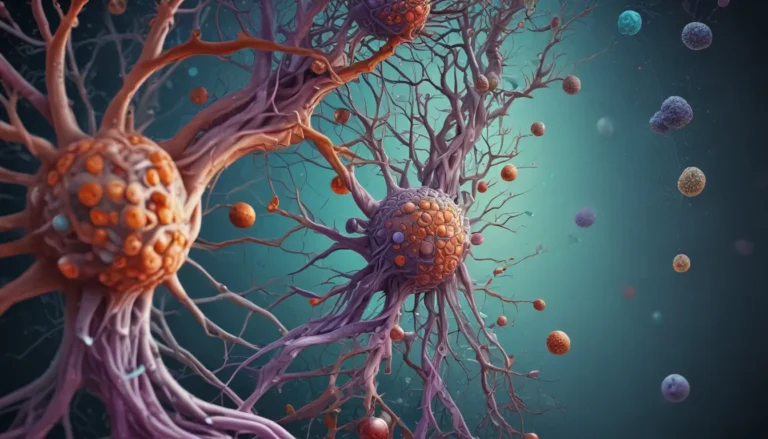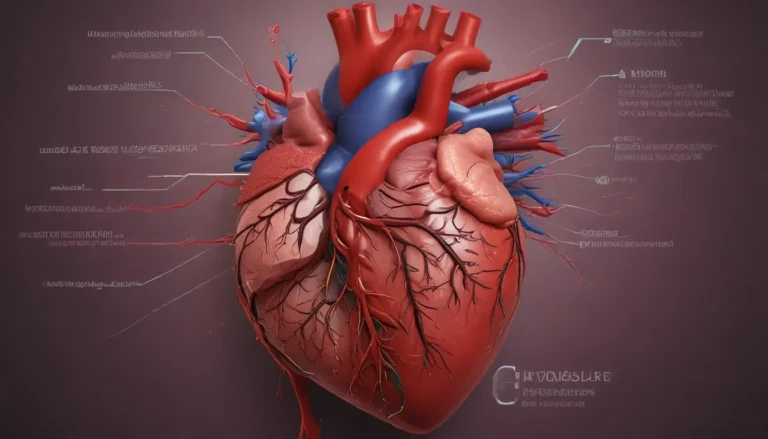A Note About Images: The images used in our articles are for illustration purposes only and may not exactly match the content. They are meant to engage readers, but the text should be relied upon for accurate information.
DNA methylation is a captivating biological process that holds significant importance in gene expression and regulation. This epigenetic modification involves the addition of a methyl group to the DNA molecule, influencing genes without altering the DNA sequence itself. Extensive research in recent years has uncovered intriguing aspects of DNA methylation’s impact on human health and development. In this article, we will explore 12 fascinating facts about DNA methylation that underscore its crucial role in biology. From its involvement in embryonic development to its association with various diseases, these facts shed light on the significance of understanding this epigenetic mechanism. Join us on a remarkable journey into the realm of DNA methylation!
Unveiling the Essence of DNA Methylation: Key Takeaways
- DNA methylation influences gene expression, development, and disease, offering potential for disease treatment through lifestyle choices and epigenetic therapies.
- Environmental factors and biomarker potential underscore the profound impact of DNA methylation on health and wellness.
- Understanding DNA methylation provides valuable insights into cellular processes and opens new avenues for therapeutic interventions.
DNA Methylation: An Epigenetic Marvel
DNA methylation serves as a critical epigenetic modification that plays a pivotal role in gene expression and regulation. By adding a methyl group to cytosine nucleotides within the DNA molecule, DNA methylation can modulate how genes are transcribed, ultimately affecting various cellular processes.
Orchestrating Gene Expression
Through the addition of methyl groups to specific regions of the DNA molecule, DNA methylation can either activate or silence gene expression. Methylated DNA regions hinder the binding of transcription factors and other proteins to DNA, thus modulating gene expression. This regulatory process is crucial for the development and maintenance of distinct cell types in the body.
Nurturing Development through Methylation
During embryonic development, DNA methylation patterns undergo substantial changes that contribute to cell differentiation and the formation of diverse tissues and organs. This epigenetic modification plays a pivotal role in determining how cells specialize and function in different bodily regions.
Inheritance of Methylation Patterns
Research indicates that DNA methylation patterns can be inherited across generations, a phenomenon known as transgenerational epigenetic inheritance. This suggests that epigenetic modifications can be passed from parents to offspring without altering the DNA sequence, emphasizing the enduring impact of DNA methylation on gene regulation.
Dynamic Nature of DNA Methylation
Unlike changes in the DNA sequence, DNA methylation patterns can be dynamically altered throughout an individual’s lifespan. Enzymes called DNA methyltransferases regulate the addition or removal of methyl groups from the DNA, allowing for the modulation of gene activity in response to environmental cues and developmental signals.
Linking Methylation to Disease
Altered DNA methylation patterns have been associated with various diseases, including cancer, neurological disorders, and cardiovascular conditions. Aberrant methylation can disrupt normal gene expression patterns, contributing to the development and progression of these diseases.
Environmental Influence on DNA Methylation
Exposure to environmental factors such as pollutants, diet, stress, and lifestyle choices can impact DNA methylation patterns. These external stimuli can induce epigenetic changes that influence gene expression and elevate the risk of developing diseases.
Unveiling the Mysteries: DNA Methylation Detection
Advanced techniques like bisulfite sequencing and DNA methylation arrays are employed by scientists to analyze and map DNA methylation patterns across the genome. These methods offer valuable insights into how DNA methylation shapes gene regulation and its involvement in diverse biological processes.
Harnessing Epigenetic Therapies
The comprehension of DNA methylation’s role in disease has spurred the development of epigenetic therapies that target abnormal DNA methylation patterns. By modifying DNA methylation, these therapies aim to restore normal gene expression, presenting novel avenues for treating certain diseases, notably cancer.
DNA Methylation as Biomarkers
Specific DNA methylation patterns can serve as biomarkers for various diseases. By scrutinizing DNA methylation profiles, researchers can potentially identify early disease indicators, monitor treatment response, and predict an individual’s susceptibility to certain conditions.
Altered Methylation in Developmental Disorders
Changes in DNA methylation patterns have been observed in individuals with developmental disorders like autism spectrum disorders. These alterations impact gene expression in the developing brain, potentially contributing to the symptoms and characteristics associated with these disorders.
Lifestyle’s Impact on DNA Methylation
Lifestyle factors including diet, exercise, and stress levels have been shown to influence DNA methylation patterns. Embracing positive lifestyle choices such as maintaining a healthy diet and managing stress can help regulate DNA methylation, promoting overall well-being.
Unraveling the Complexity of DNA Methylation
In conclusion, DNA methylation stands as a captivating epigenetic process crucial for gene expression and development. These 12 intriguing facts about DNA methylation illuminate the complexity and significance of this mechanism. From its role in cellular differentiation to its influence on aging and disease, DNA methylation remains a focal point of active research. Understanding the nuances of DNA methylation holds promise for therapeutic interventions and personalized medicine, paving the way for groundbreaking advancements in the field of biology.
FAQs: Unveiling the Enigma of DNA Methylation
- What is DNA methylation?
-
DNA methylation refers to the addition of a methyl group to cytosine nucleotides in DNA, influencing gene expression through an epigenetic process.
-
How does DNA methylation affect gene expression?
-
DNA methylation regulates gene expression by hindering transcription factor binding to DNA, thereby modulating gene transcription and recruiting proteins for chromatin structure modification.
-
Which enzymes are involved in DNA methylation?
-
DNA methyltransferases (DNMTs) such as DNMT1, DNMT3A, and DNMT3B catalyze the transfer of methyl groups to DNA, maintaining DNA methylation patterns during cell division and development.
-
Can DNA methylation patterns be inherited?
-
Yes, DNA methylation patterns can be inherited across generations through faithful replication during cell division, preserving epigenetic marks over time.
-
How can DNA methylation be altered?
-
Environmental exposures, diet, lifestyle choices, medications, and diseases can alter DNA methylation patterns, impacting gene expression and disease susceptibility.
-
Are DNA methylation patterns reversible?
-
Yes, DNA methylation patterns are reversible, with specific enzymes catalyzing the addition or removal of methyl groups, enabling dynamic changes in gene expression and cellular function.
-
What role does DNA methylation play in cancer?
-
Aberrant DNA methylation patterns in cancer cells can silence tumor suppressor genes or activate oncogenes, contributing to cancer development and progression, guiding the development of targeted therapies.
-
Can DNA methylation be utilized as a biomarker?
-
Yes, DNA methylation patterns can serve as biomarkers for diseases like cancer, aiding in early detection, risk assessment, and prognosis prediction, revolutionizing precision medicine.
-
Can lifestyle changes impact DNA methylation?
-
Lifestyle choices such as diet, exercise, stress management, and environmental toxin exposure can influence DNA methylation patterns, promoting favorable patterns and enhancing overall well-being.
-
Are there diseases linked to abnormal DNA methylation?
- Abnormal DNA methylation patterns have been associated with various diseases including developmental disorders, autoimmune conditions, and neurodegenerative diseases, offering insights into disease mechanisms and therapeutic targets.
Unraveling the mysteries of DNA methylation illuminates the intricate workings of genetics and biology. If you’re intrigued to learn more, consider exploring the enigmatic realm of genetic modification, where boundaries are being pushed to reshape our understanding of life. Dive into the realm of cancer research, where remarkable strides are made in combatting this ailment through initiatives like Ride To Conquer Cancer. For those captivated by the earliest stages of life, exploring developmental biology and gastrulation intricacies will surely captivate your imagination.
We thrive on delivering trustworthy and engaging content that enriches your knowledge and understanding. Each fact is derived from contributions by individuals like you, ensuring a diverse array of insights and information. Our devoted editors meticulously review each submission to uphold the highest standards of accuracy and reliability, guaranteeing that the facts shared are not only captivating but also credible. Trust in our dedication to quality and authenticity as we embark on a journey of exploration and learning together.






